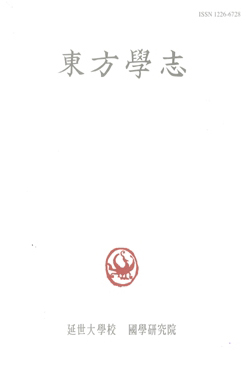18~19세기 조선 국내 가죽 유통조직의 분화와 분쟁
Segmentation and Conflict among Leather Trading Organizations in Joseon of the 18th and 19th centuries
- 연세대학교 국학연구원
- 동방학지
- 제205집
-
2023.12177 - 211 (35 pages)
-
DOI : 10.17788/dbhc.2023..205.002
- 65

이 논문은 조선 후기 상업적 특성을 일률적으로 규정하기보다는 각 상품별 유통적 특성을 포착할 필요성을 제기하면서, 그 일환으로 가죽 상품군의 유통구조를 밝히는 데 목표를 둔다. 가죽에 대한 기존 연구들이 주로 국제관계 속에서 가죽을 다루었다면, 이 글에서는 당시 가죽을 취급했던 조선 국내의 조직들과 그들의 관계에 초점을 두고자 하였다. 일차적으로는 국가적으로 주요하게 조달되었던 가죽의 종류와 그 각각의 가죽 유통에 관여했던 모든 조직들을 일람하였다. 국가에서 취급 권한을 승인해주었던 공인계(貢人契), 시전(市廛), 장인(匠人) 등을 주로 검토하여, 돈피계, 구피계, 관동방물계, 서피계, 모물계, 모전계, 호표피계, 우피계, 창전, 상전, 등의 존재를 확인하였다. 이들은 처음부터 공인계로 창설된 사례, 시전이면서 공인권을 획득한 사례, 장인이면서 가죽이나 가죽제품의 매매에까지 관여하기 시작한 사례로 나누어 볼 수 있었다. 이차적으로는 각 조직들이 서로 어떠한 관계 속에서 활동하고 분쟁을 벌였는지를 분석하였다. 18~19세기 가죽류의 유통을 둘러싼 분쟁은 도성 안팎의 장인, 공인계, 시전간에도 일어났을 뿐 아니라 지방 생산지와 무역 거점과 연결되어서도 나타났다. 다른 상품군과 비교하여 가죽 상품군의 분쟁은 다음과 같은 특징을 보였다. 첫째, 가죽의 종류가 다양했던 만큼 각 물종별로 담당 공인(貢人) 조직이 분화되었지만 의외로 물종에 대한 상호 침범은 적었던 편이었다. 둘째, 도읍지로 유입되는 물품에 대한 독점권을 다투는 보통의 다른 상품군과는 달리, 국제무역품인 가죽은 도읍지에서 지방으로 유출되는 과정 또는 지방 무역거점에서의 분쟁이 핵심을 이루었다. 셋째, 가죽 분야에서는 공인계의 해산·혁파 사례가 거의 보이지 않아, 가죽 유통을 통해 얻는 이익이 비교적 안정적이었던 것으로 추정된다.
Undertaking an analysis of the distributional structure of leather, this article also argues for the need to identify the distributional characteristics of different commodity groups instead of providing a monolithic characterization of the late Joseon commercial system as a whole. Previous studies have focused on leather in international relations, but this article focuses on domestic organizations. The first step was to list the main types of hides procured nationally and all of the organizations that were involved in their distribution. The gongin-gye(貢人契), shijeon(市廛), and artisans who were authorized to handle the hides were reviewed. Some organizations were established from the beginning as gongin-gye, whereas others were originally shijeon merchants or artisans who acquired rights of gongin. The second step was to analyze the relationships and conflicts between these organizations. Disputes over leather were characterized by the following features. First, gongin-gye organizations were segmented to supply various types of hides, but there was surprisingly little mutual encroachment as far as the type of leather. Second, unlike other commodity groups, which tended to compete to monopolize of goods entering the capital, leather, an international commodity, focused on the flow of goods from the capital to the provinces or on disputes at provincial trading centers. Third, rare examples can be found of the dissolution or abolition of organizations in the leather sector, which suggests that profits from the distribution of leather were relatively stable.
1. 머리말
2. 국가적으로 필요했던 가죽의 종류
3. 가죽 유통조직의 세분화
5. 맺음말 : 가죽 관련 분쟁의 특징
(0)
(0)